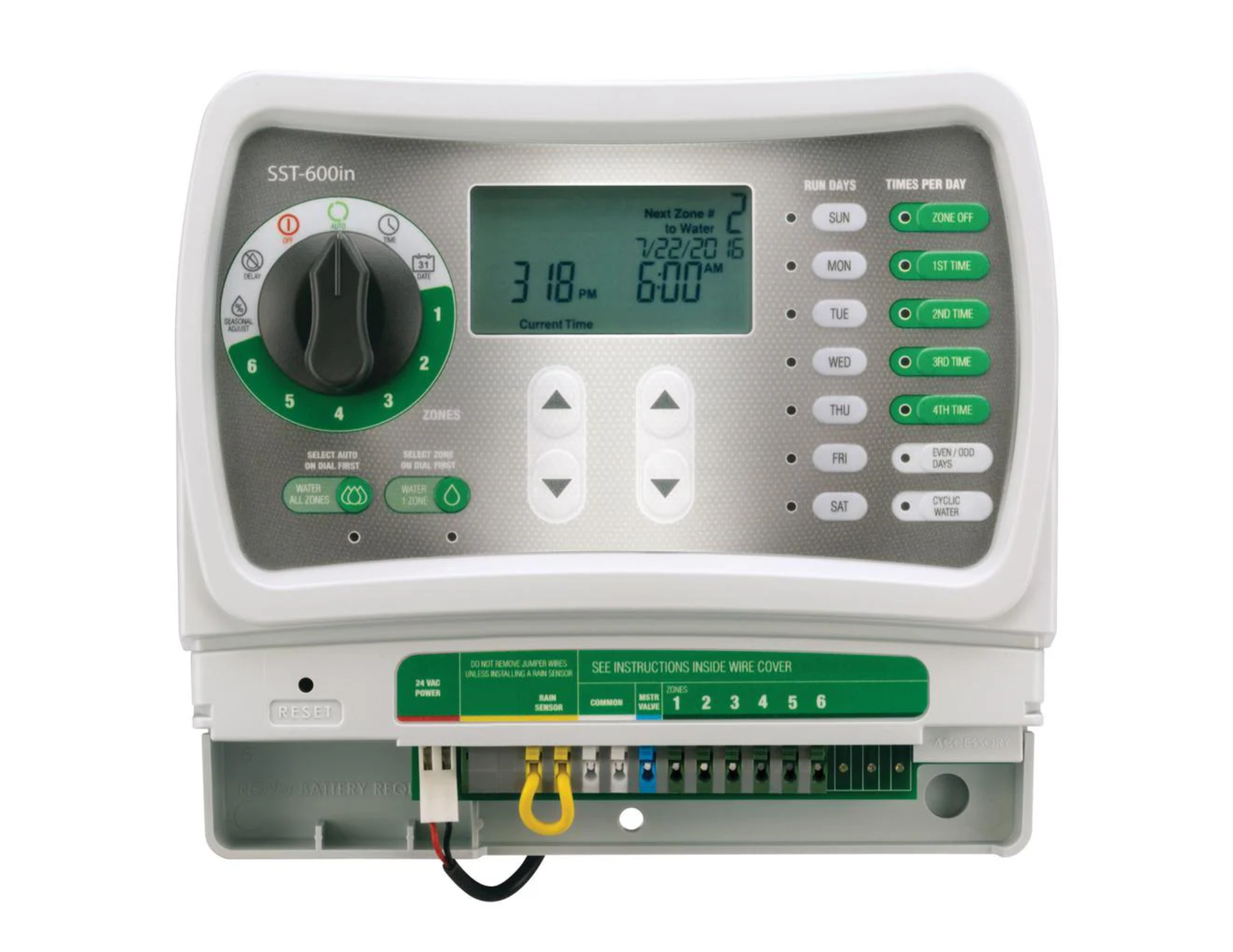Irrigation Guide
Smart Watering: A Homeowner’s Guide to Efficient Irrigation
Your irrigation system is more than just sprinklers; it’s the key to keeping your yard healthy while saving water. Understanding how your system works can help you avoid wasted water, lower your bill, and ensure your landscape thrives, even in dry conditions.
Sprinkler systems aren’t one-size-fits-all. Choosing the right sprinkler heads and settings can significantly affect how efficiently you water. Your irrigation system likely uses one (or more) of these three:
Spray Heads —These heads mist water over a fixed area, best for small areas and flower beds. They work fast but can waste water if not properly adjusted.
Rotor Heads—These heads rotate, spraying water in streams, preventing pooling and promoting even coverage. They are used for larger lawns.
Drip Irrigation – Ideal for plants and shrubs, this system delivers slow, targeted watering directly to roots, minimizing waste.
👉 Tip: Not all areas of your yard need the same type of watering! Using the right sprinkler heads for each section can prevent overwatering and runoff.
Your irrigation controller is the brain of your system. Setting it correctly helps prevent overwatering and ensures your plants get the proper moisture.
There are two main types of controllers: Manual vs. Smart Controllers.
- Manual Controllers require you to adjust watering times manually with the seasons. They have the advantage of allowing you to know exactly what's going on with your system all year.
- Smart Controllers adjust automatically based on weather conditions, saving thousands of gallons annually. These are great for water conservation, but can be more expensive.
One of the biggest mistakes homeowners make? Not realizing their controller has multiple schedules running at once! Many systems are set to water more frequently than necessary, leading to excessive use and higher bills. Double-check your controller settings to ensure you're not unintentionally overwatering.
👉 Tip: Water before sunrise or after sunset to reduce evaporation.

Your yard's watering needs depend on sun exposure, plant types, and soil conditions, which is why irrigation systems use zones to ensure each section gets the right amount of water.
How to Check Your Zones:
- Run a test cycle to see if water reaches all areas evenly.
- Look for dry spots or pooling—these signal improper coverage.
- Adjust sprinkler direction and pressure to prevent runoff.
A small leak in your irrigation system can waste thousands of gallons over time. Regular checks help prevent water loss and keep your system running efficiently.
Signs You Have a Leak:
- 🚨 Higher-than-usual water bill
- 🚨 Soggy spots or puddles in your yard
- 🚨 Sprinkler heads that drip even when off
Make Leak Checks a Habit!
Many homeowners don’t realize how easily sprinkler nozzles can break, whether from a lawnmower, curious squirrels, or simple wear and tear. That’s why it’s essential to inspect your system regularly. If a weekly check isn’t possible, aim for at least once a month to catch issues early.
Simple Fixes:
- Clean clogged nozzles and replace broken heads.
- Check for cracks in underground pipes.
- Adjust pressure to avoid misting (which leads to evaporation).
Being proactive about maintenance helps prevent wasted water, lowers your bill, and keeps your landscape healthy!
A healthy landscape doesn’t have to mean high water usage. Texas-friendly plants and innovative design can cut water use in half while keeping your yard beautiful.
🌿 Switch to Native & Drought-Tolerant Plants
- Native plants require less water and maintenance than traditional lawns. They thrive in Texas soil and climate, typically attract pollinators, and improve soil health.
- Consider replacing high-water grass (like St. Augustine and Bermuda) with Buffalo or Zoysia, two options that thrive with less watering.
- Use mulch around plants to retain moisture and prevent evaporation.
👉 Tip: 50% of household water use goes toward outdoor irrigation. Reducing turf and using native plants can cut that in half!
Check out the Denton County, Texas Master Gardener site here to learn more about native plant life:
https://www.dcmga.com/

